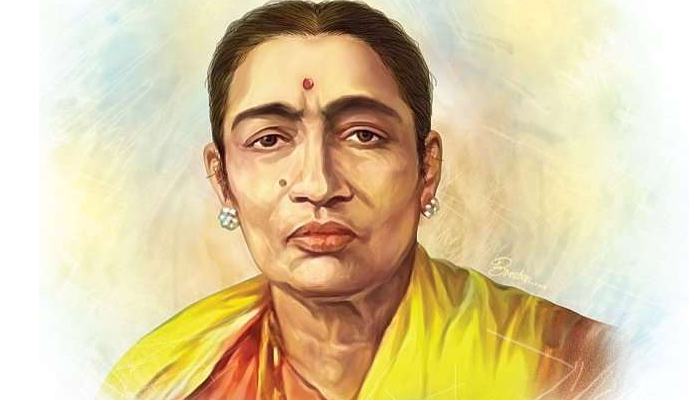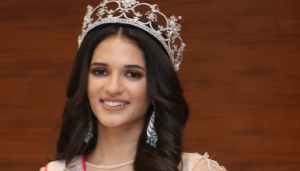Vinayak Damodar Savarkar’s wife Yamunabai (1888–1963) was an Indian social worker who also happened to be a politician, activist, and novelist.
PERSONAL INFORMATION
In District Thane, Maharashtra, Yamunabai Savarkar was born as Yashoda on Tuesday, 4 December 1888 (age 75 at death). She was a Sagittarius by birth sign.
Ramchandra Trimbak (Bhaurao) Chiplunkar is the name of her father. Her father served as the princely ruler of Jawhar. Lakshmibai (Manutai) Chiplunkar is her mother. Of her seven sisters and four brothers, she was the oldest.
In February 1901, Yamunabai Savarkar wed Vinayak Damodar Savarkar. The marriage had two children: a girl named Prabhat Chiplunkar, who was born on 7 January 1925, and a son named Vishwas Savarkar, who worked for the Walchand Group and was an author.
Yamunabai gave birth to a boy named Prabhakar in December 1904; however, in 1905, he passed away from smallpox. Vinayak Savarkar was in London when Prabhakar passed away. They welcomed a daughter in 1926, Shalini, but she passed away in infancy.
The razor-sharp intellect of Vinayak Damodar Savarkar drew the attention of Yamunabai’s father. The Chiplunkars and the Savarkars lived close by. Ganesh Damodar Savarkar’s maternal uncle recommended Vinayak and Yamunabai’s alliance to him since Ganesh was looking for a suitable match for Vinayak. Ramchandra Chiplunkar offered to pay for Vinayak Damodar Savarkar’s higher studies soon after the alliance was established. They got married in February of 1901. Yamunabai was affected by the Savarkar family’s patriotic atmosphere. She changed into that setting and began contributing her voice to Vinayak Damodar Savarkar’s poems and ballads. According to legend, the Savarkar family’s other female members used to memorise songs and poems that celebrated their country. Vinayak Savarkar continued his higher education at Fergusson College after their marriage as Yamunabai’s father had promised. Throughout his college breaks, Vinayak Savarkar frequently visited his home to get to know his wife, Yamunabai Savarkar.
EDUCATION
Yamunabai Savarkar reached the IV level of study. Yamunabai Savarkar came from a wealthy family in Maharashtra’s Thane.
Joining Atmanishtha Yuvati Samaj
The Savarkar family urged Yamunabai Savarkar to join Atmanishtha Yuvati Samaj, which is Marathi meaning Self-respecting Young Women’s Society, soon after her marriage. The widow of Babarao Savarkar, Yesuvahini, founded this revolutionary organisation. The primary goals of this revolutionary organization’s founding were to engage more Indian women in the struggle for independence by raising their awareness of the political climate in India. By supporting the Indian independence cause, this organisation hoped to instil a sense of nationalism in Indian women. There were between 100 and 125 women in this group, including well-known Indian freedom fighters Godumai Khare and Laxmibai Datar.
In order to motivate one another for a cause, this organization’s group members used to chant patriotic songs written by Govind (Aba) Darekar and Vinayak Savarkar during meetings. To raise their spirits, they would read the anti-British pieces that appeared in The Kesari. Before becoming a member of the Atmanishtha Yuvati Samaj, one had to swear an oath. “I hereby give witness before Shivaji and Bhavani Durga Devi that I shall use swadeshi goods only, love my country more than my life, strive for my country’s freedom, and help those who are doing so,” it was written. Shivaji Raja, who won freedom through war, and Bhavani Mata, who gives strength, were also mentioned.
Speration from Vinayak Damodar Savarkar
In 1906, Vinayak Damodar Savarkar was a practising attorney in London. He became active in revolutionary operations in London against the Indian British Raj. He was being watched by the British police. After fifteen days had passed since the death of Vinayak’s young boy, his older brother, Babarao Savarkar, was imprisoned by the British for his participation in anti-British activities in India and was transported to the Andamans cells jail for harsh punishment. The British authorities also imprisoned Vinayak Damodar in London before sending him back to India. He attempted to flee during his journey at Marseilles but was once more apprehended. He was then held at the jail in Nashik.
Yamunabai Savarkar travelled with her brother to visit Vinayak as soon as she learned that he was being held in the Nashik jail. She rode a horse from Trimbakeshwar to Nashik. She received no assistance from any of her friends in Nashik since they were all afraid of the British authorities. None of her friends were willing to help her. She and her brother spent the night at a temple in Tambat Ali, Nashik, and the next day, she spent 45 minutes with her husband. Vinayak Damodar Savarkar was then transferred to the Dongri prison in Mumbai shortly after being given a cellular prison sentence in the Andaman Islands. In the Dongri prison, Yamunabai Savarkar paid him a visit. She reportedly became tearful after meeting her spouse, according to several media reports. When she said this, Vinayak Damodar Savarkar encouraged her by saying that he was giving his life in order for India to gain its independence. He also said that the fundamental goal of human life wasn’t to have children and gather precious resources because crows and sparrows also lived like way. We would re-convene if the Almighty is compassionate, he said. Until then, if you’re ever tempted by the idea of leading a typical family life, just keep in mind that if having children and gathering a few twigs to make a house counts as a married life, then so do ravens and sparrows. Yamunabai retorted that she was attempting to comprehend his feelings and walk in his footsteps. We are attempting to accomplish just that, she continued. We have each other, as far as we are concerned. We will be satisfied if you look for yourself.
Vinayak Savarkar reportedly took thirty steps back with his arms outstretched after the meeting to persuade his wife and her brother that he could comfortably take the weight of the handcuffs. When Vinayak Savarkar was released from the Andamans prison, Yamunabai Savarkar once more ran into him there.
SOCIAL ACTIVISM
Yamunabai began taking part in social activities after Vinayak Damodar Savarkar was freed from the Andaman cellular prison. On July 26, 1930, she planned a women’s gathering for the general public at Ratnagiri’s Vithal Mandir. The meeting’s agenda included promoting the idea of “Swadeshi” among its female members and encouraging them to expand their Indian liberation activities. Yamunabai Savarkar and Madhavrao Bagal, the head of Satyashodhak, attended a luncheon for ladies from different communities on September 9 in Ratnagiri. To commemorate Madhavrao Bagal’s visit to Ratnagiri, this meal was organised. Yamunabai Savarkar and Vinayak Savarkar co-hosted an Akhil Hindu Yagnya ceremony at Ratnagiri on September 10, 1932.
On August 20, 1936, Yamunabai Savarkar was asked to dedicate a sacred palanquin in Maharashtra in honour of the Akhil Hindu Nama Saptah. On September 26, 1936, more than 400 women, including Indian women revolutionaries, members of low castes, and ex-untouchables, attended an intercommunity supper. The main guest at this meal, which was held at the Patit Pavan Mandir in Ratnagiri, was Yamunabai Savarkar. The ladies’ branch of the Chitpavan Brahmin Sangh honoured Yamunabai Savarkar for her participation in social work and revolutionary actions on April 19, 1941. She received recognition for her hard efforts in urging Indian women to join the country’s revolutionary movements by enlisting their kids in the armed forces.
Yamunabai Savarkar received an invitation to attend an Akhil Hindu Tilgul (sesame and jaggery) function on January 30, 1944. She was asked to make an announcement on stage. She stated throughout her speech that she was from India. “The nation is my home, and my home is my nation,” she remarked.
At the public gathering held in honour of Vinayak Savarkar’s 61st birthday, Yamunabai Savarkar was in attendance. This event was planned to celebrate Vinayak Savarkar’s contributions. At a Hindu Mahasabha meeting in December 1950, the organisers presented Yamunabai Savarkar with a traditional saree as well as other priceless goods like a gold jewellery and money. Thousands of women participated in this discussion, which was conducted in Veer Savarkar Nagar in Pune under the direction of Dr. N.B. Khare. She honoured M.S. Dikshit with a pen at the occasion for writing the biography of Yamunabai Savarkar. Speaking in honour of Yamunabai, many female Hindu Mahasabha members continued the ceremony. Shantabai Gokhale (Pune), Godumai Khare (Nashik), Saraswatibai Kavanikar, Malatibai Agarkar, Lele, and Sindhutai Godse were among those who spoke in Yamunabai Savarkar’s honour.
DEATH
At Dr. AK Talwalkar’s Colony Nursing Home in Dadar, Maharashtra, she passed away on November 8, 1963.
The doctors at Dr. AK Talwalkar’s Colony Nursing Home in Dadar advised full rest for Yamunabai Savarkar after her health began to worsen in 1956. She recovered from her illness at the end of the year. She was once more admitted to AK Talwalkar’s Colony Nursing Home in Dadar in October 1963, where lymphoma was discovered. Due to a protracted illness, she passed away on November 8, 1963, at the same hospital. At Yamunabai’s death, Vinayak Damodar Savarkar spoke about her life.
He stated: “Mai has left us. Her life is now complete.
As requested by Vinayak Savarkar, Yamunabai Savarkar’s body was transferred from the hospital to the crematorium as soon as she passed away. Not even the Savarkar Sadan received it. In addition, Vinayak Damodar Savarkar was absent from his wife Yamunabai Savarkar’s cremation. Vinayak was once questioned about why he didn’t attend his own wife’s cremation. Then he responded, “I’ve already said goodbye to Mai. I don’t feel like going there right now.


